Here we take a look at some of the most tricky legs in the very interesting WOC 2023 Middle Qualification courses – and how the best runners solved the course planners’ puzzles. Although more technical courses are expected in Saturday’s Middle Final and the courses might not look that tricky from the sofa, the runners definitely got challenged in Trin this Wednesday morning.
Several runners – among them heat winner Matthias Kyburz (Switzerland) – talked about how they had managed to take the tempo down in the tricky passages while pushing the speed up where possible. This is definitely a key to success in this kind of terrain. [Note: For a general summary of the WOC Middle Qualifier, see the traditional Maps & Results article.]
Most tricky control of the day: Women C #2
The control where most mistaked were made among the Top-20 finishers in all heats was the second control in women’s heat C, shown at the top of this article – with more than 10 minutes of mistake in total among the top-20 finishers. It is a control where at first sight it might be tempting to take the path around to the right, but a closer look makes it clear that (a) this is too long and gives extra climb, (b) getting down to the path is not fast and (c) attacking the control from the path is just as tricky as running straight. To make the control more technically easy, you would have to take the path all around to the back of the control, but then you have to run twice as long.
So how did the best runners solve this leg? Looking at the GPS tracks colored by split time (green = fast, red = slow), we clearly see that all the fastest women on this leg run fairly straight, but keep somewhat to the left of the line. Runners who kept more to the right of the line lost some time, while runners running around on the path lost a lot of time.
Looking in detail at the route of the heat winner – and fastest on this leg – Simona Aebersold, we see that she is careful to avoid all green areas. To the right of the line you would be close to green areas – and in this forest it tends to be a bit greener also close to the green areas, so better keep good distance if you can. Also, when coming to the control slightly from the left you first pass a quite marked height and your right (the round one, index contour) and then you move towards a marked hill (the straight index contour with a form line just below which goes towards the cliff where the control is placed) that you can follow into the control, “prolonging” the control. There is a path there just before the control, but that may be a trap if you put all your trust into it (although it might save you as well).
The most tricky control in the men’s class was also the second control in the C-heat; not the same leg, but a shorter leg from the same first control (not shown here). There were several short legs both in the women’s and men’s heats in this area just after the start where runners did mistakes.
Second most tricky control of the day: Women A #6
There were several controls in the women’s heat with mistake of around 7-8 minutes – some technical legs like the one shown above, and some longer legs like the 6th control in Women A shown below. The course setters had given the runners a nice mix of short technical legs like the second leg in Women C and longer legs where you had to make a good plan and follow it – like this 6th leg in Women A. After running the first part of the course in surprisingly green terrain – a lot greener than the same terrain 20 years ago according to one of today’s test runners – you definitely want to try to exploit the roads here to push up the tempo, and also avoid the parts where the terrain is “broken up” by many small hills, depressions other contour details.
But how? If you just start off straight with a loose plan to “try to exploit the roads somewhere to the left” as you see a nice road going close to the line in the right direction there, it might go very wrong (I speak out of hard earned experience). When you look closer at the map, you need to run quite far with many “S-curves” to exploit the roads on the left. If you instead run to the right – like heat winner Hanna Lundberg (Sweden) and the others who were fastest on the leg – you can run a lot on paths and roads, and just as importantly – avoid the “broken terrain” between the paths. See Lundberg’s routechoice below (the GPS is not very accurate, but it shold be quite clear how Lundberg exploited the paths and roads).
Looking at the GPS tracks colored by split time for this leg, it is very clear how the fastest on the leg choose Lundberg’s route. It is also interesting to note how few of the runners actually see and choose this option where you get the nice combination of fast running and easier navigation.
Men’s A # 7: Accurate execution is key
Another leg of interest is the 7th leg in the men’s A heat. This one is easier than the long women’s leg above, but it is still possible to go into similar traps. Let us first look at the leg without routes. I am not sure I would really be tempted to run straight here – would you?
But when we look at the route of the fastest in the heat and on this leg – Joey Hadorn (Switzerland, in green below), we see that he finds a good route straight were he can exploit the roads in several places – but this requires very accurate orienteering between the roads.The other good option around to the left ran by Canadian Jan Erik Naess (in blue below). Note that the GPS-tracks are quite a bit off, the curves should be aligned with the curves on the roads. Here the orienteering between the roads and tracks is easier, so a good choice for many runners who are not on the very top level.
When looking at the routes on the leg colored by split time, we see that many runners lose time by not having the clean execution of Hadorn and Naess. Both out of the control and between paths you can lose significant time by not being accurate – this is just as important as the short technical legs in this type of terrain.
Men’s B # 14: A different type of control
Finally a very different type of control – the 14th control in the men’s B-heat. In the final part of the course the terrain turned into more “typical continental terrain”, with less contour details. The leg to control 14 is a short and quite easy leg where you would not expect many runners to lose time.
Quite a few runners – among them Martin Hubmann (Switzerland) who is one of the outsiders in the Middle distance final – chose to not run straight over the small green hill, but instead run around the hill, and therefore had to run longer and could not exploit the path going straight towards the control. Here is a comparison between Kasper Fosser (Norway) who wins the leg and Hubmann who loses 40 seconds.
The routes colored by split time show that quite a few do like Hubmann here.
It seems strange and maybe a bit unexpected that this type of control pops out as one of the controls with most mistakes in a course in such tricky terrain, but it highlights that you really have to be fully concentrated from start to finish, even on the controls that look quite easy. Many championships have been decided by “studid mistakes” on the easier controls…
 World of O News
World of O News
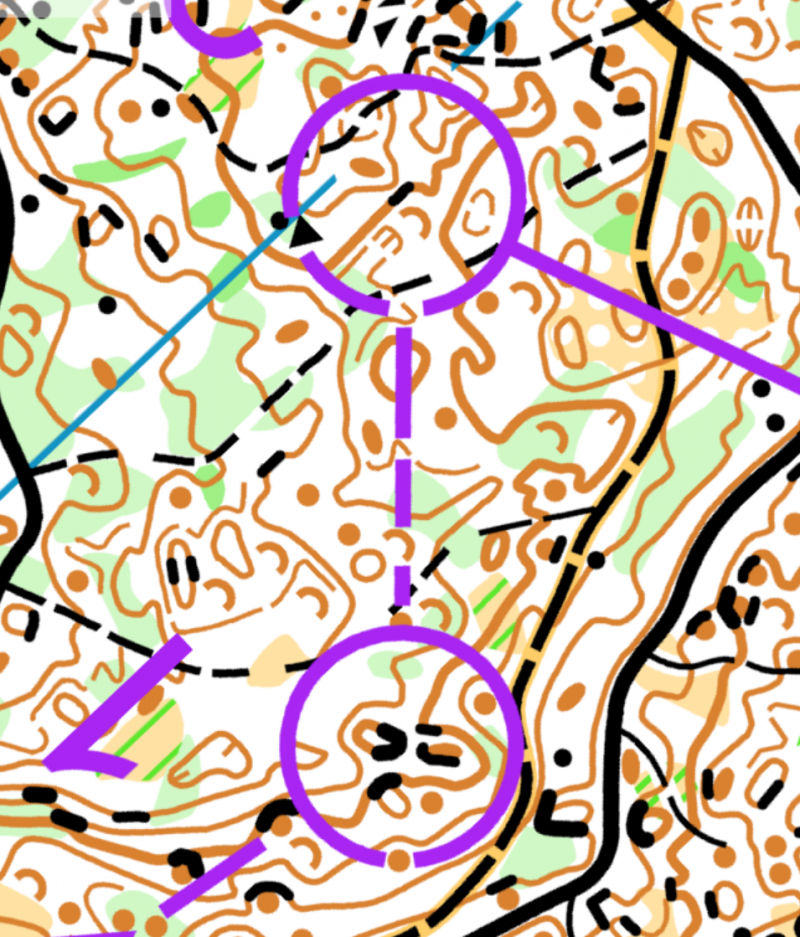
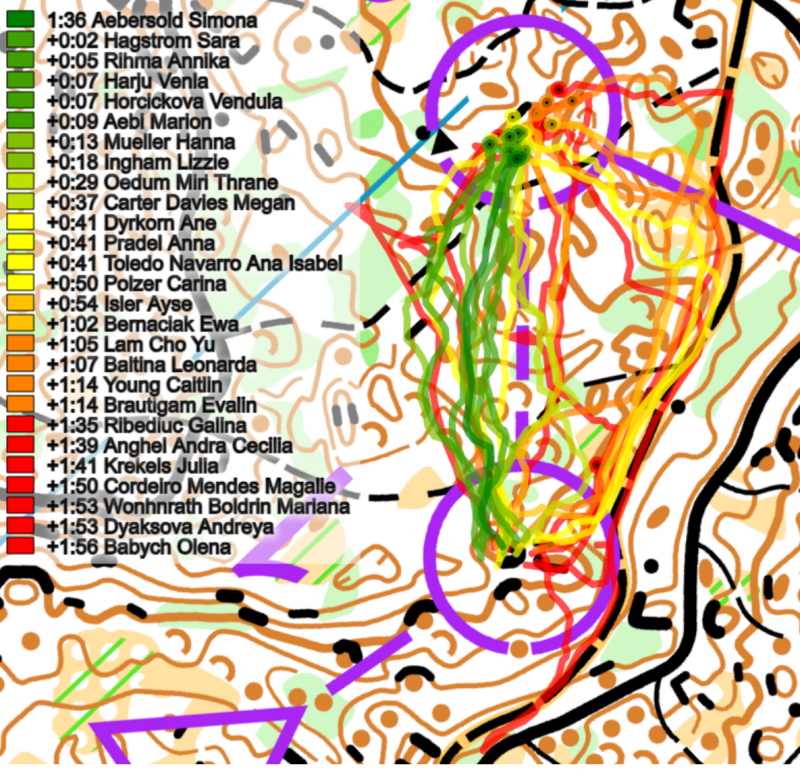

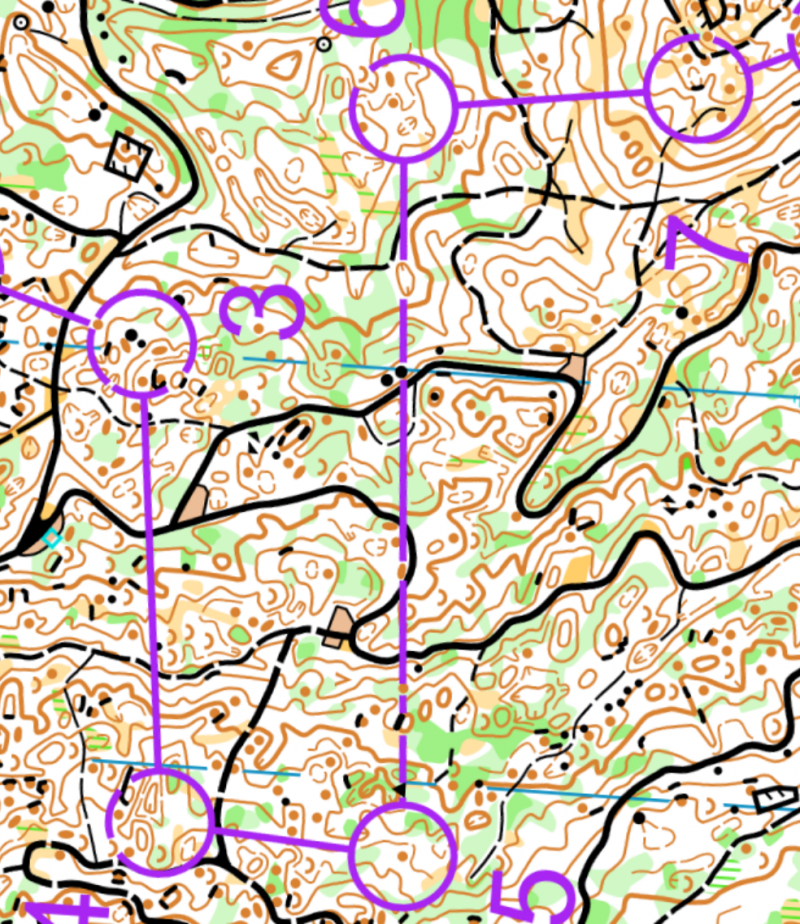
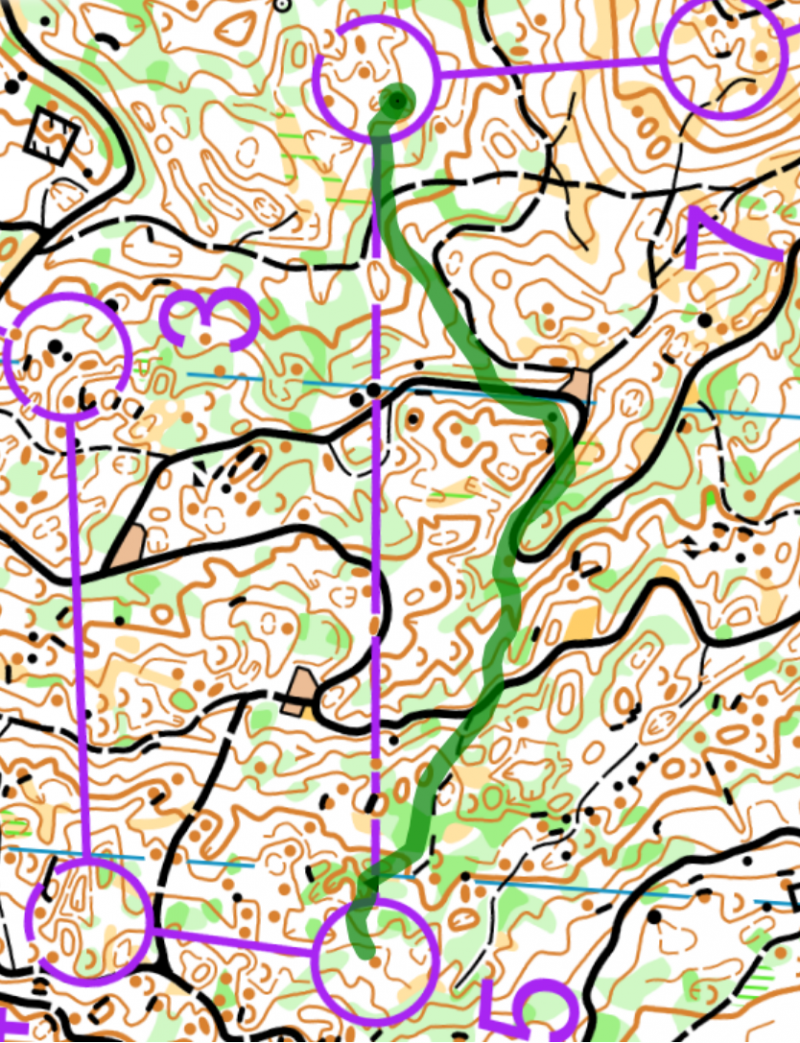
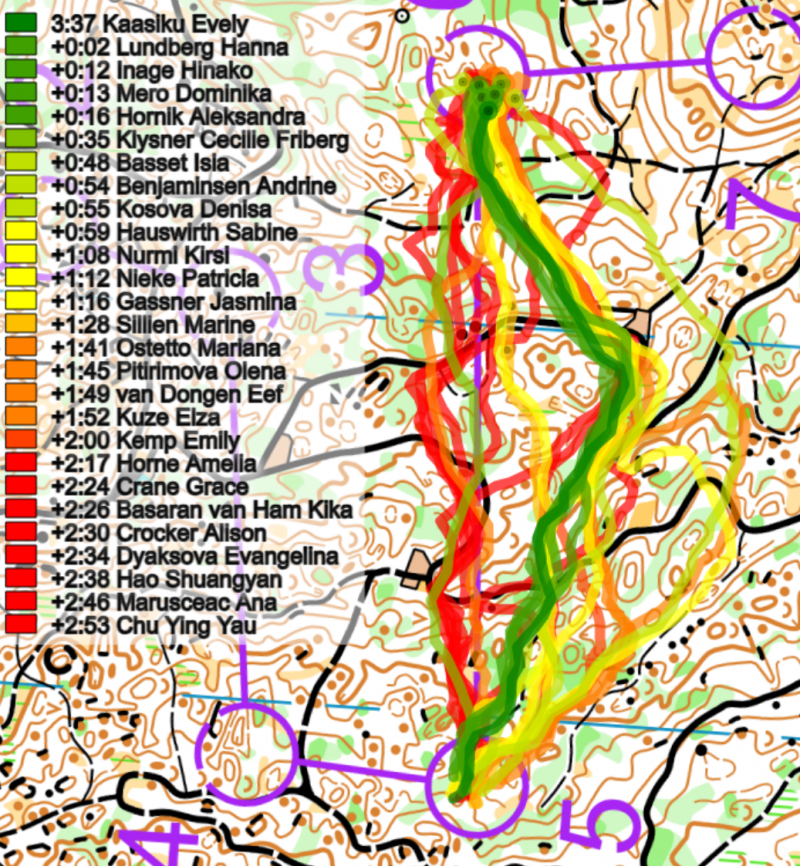
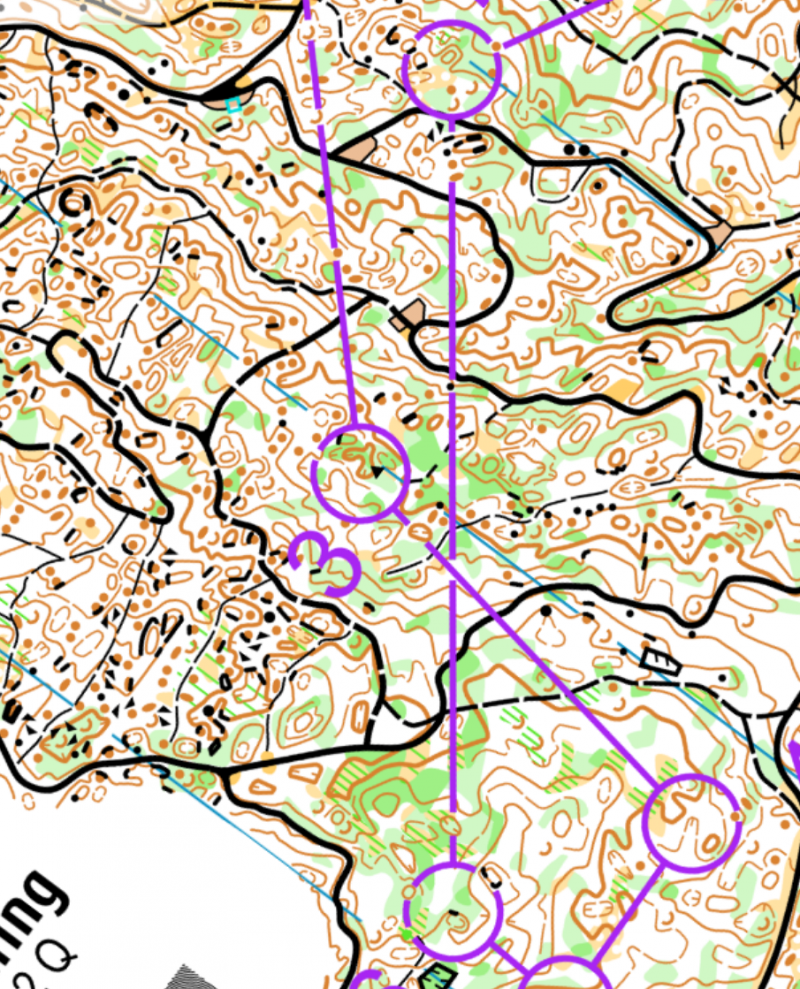
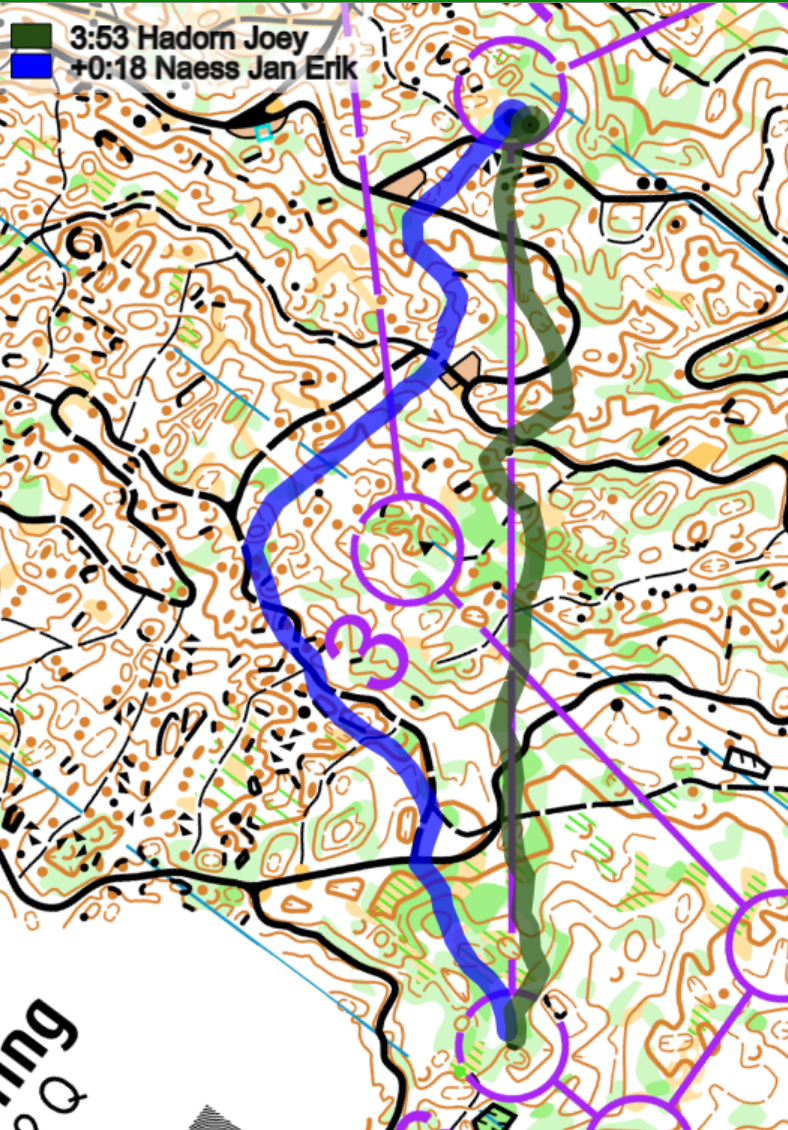
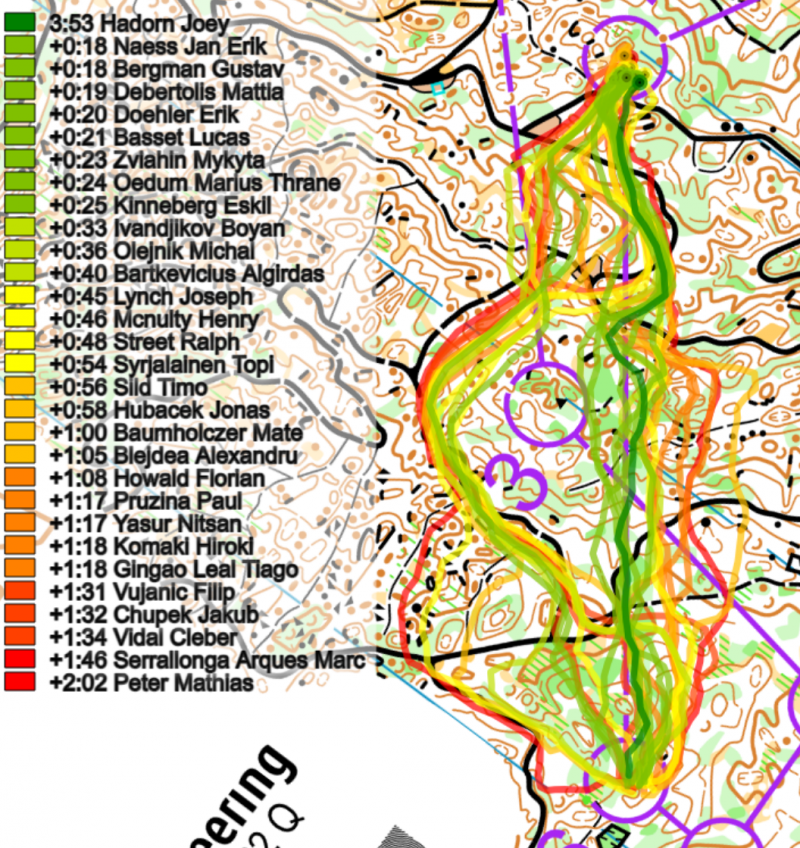
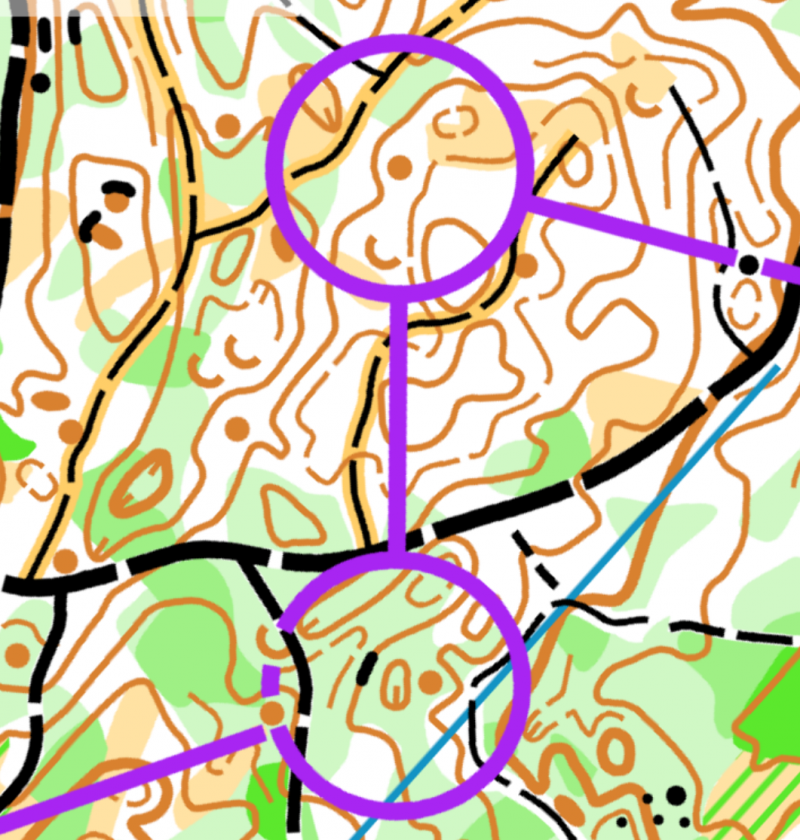
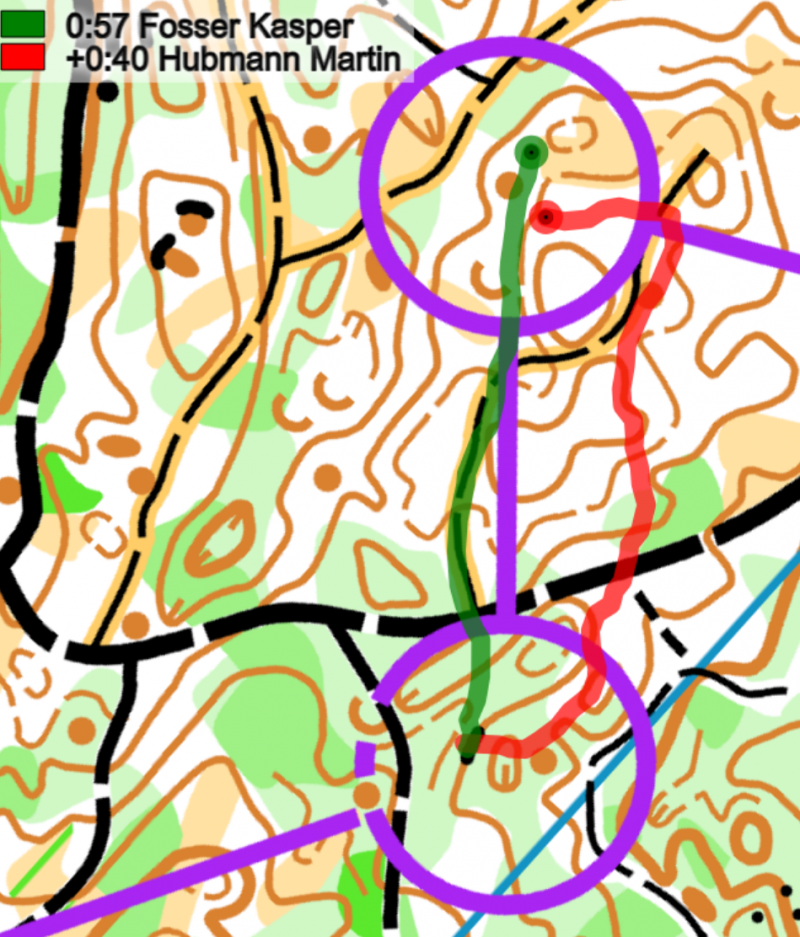
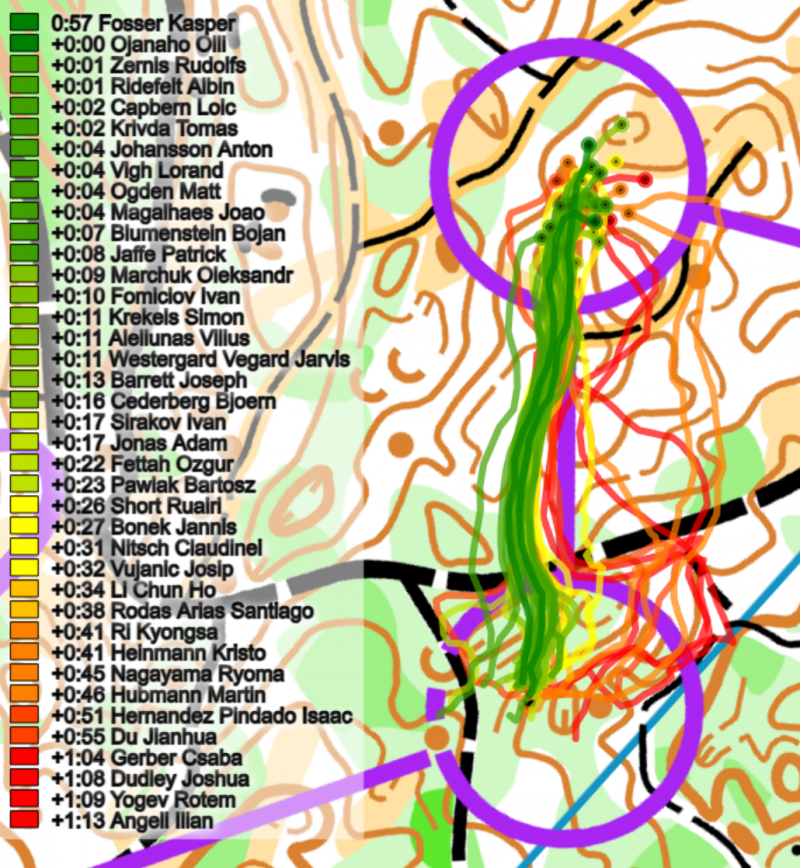
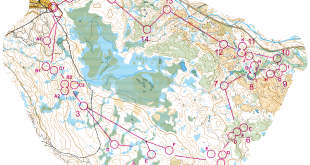
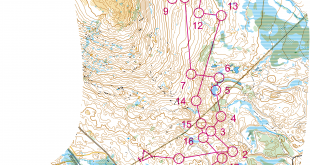
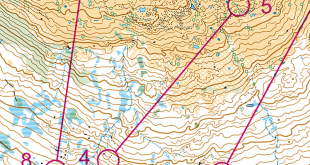
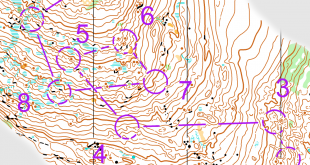
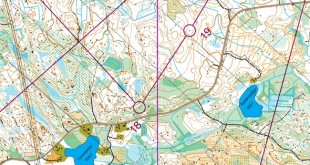
Very nice analysis Jan, thank you!
Looking forward to the Middle final on Saturday, it should be very interesting, with more possible podium finishers than in today’s Long.